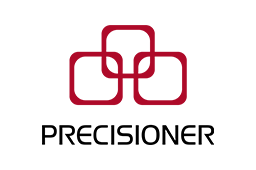
Key Provisions of the Act: Localization Mandates and Supply Chain Restrictions
The core objectives of the EU's Net-Zero Industry Act include:
1. Local Manufacturing Requirements: By 2030, 40% of the EU's clean energy equipment (e.g., solar panels, wind turbines, batteries) must be domestically produced.
2. "Non-Price Criteria" in Tenders: Starting December 2025, 30% of renewable energy project tenders in the EU must evaluate factors such as "supply chain resilience," "cybersecurity," and "sustainability" instead of solely prioritizing low-cost bids.
3. Restrictions on Chinese Supply Chains: If a product category (e.g., solar panels) relies on China for more than 50% of its supply, EU public procurement will require that at least 50% of the value comes from within the EU, or companies may face fines of up to 10% of contract value.
4. Fast-Track Approvals & Subsidies: The EU has established "Net-Zero Industrial Acceleration Zones" to streamline permitting and prioritize local manufacturers.
Impact on China’s New Energy Industry
1. Solar Industry: Potential Sharp Decline in European Market Share
China is the world’s largest solar panel producer, accounting for over 80% of EU imports in 2024. However, NZIA stipulates that if solar panel supply depends on China for more than 50%, EU procurement will require:
- Final assembly outside China
- At least four key components (e.g., inverters, cells) must not come from China
This means Chinese solar companies must either set up EU factories or partner with local firms, or risk losing major contracts.
2. Wind & Battery Industries: Growing Localization Pressure
Chinese wind turbine manufacturers have seen rapid growth in Europe, but NZIA mandates:
- 75% of onshore wind equipment value must come from non-Chinese supply chains
- Maximum of three Chinese components allowed, with critical parts (e.g., gearboxes) requiring local production
Similarly, Chinese battery giants like CATL and BYD will face stricter localization rules for their European operations.
3. Hydrogen & Electrolyzers: Higher Technical Barriers
China has rapidly advanced in electrolyzer manufacturing, but the EU now requires hydrogen projects to comply with "cybersecurity and data localization" standards, forcing Chinese firms to store operational data within the European Economic Area (EEA). This increases compliance costs.
China’s Countermeasures
To mitigate the impact, the Chinese government and industry are adopting strategies such as:
1. Accelerating Overseas Localization
- CATL, LONGi Green Energy, and others have built factories in Germany and Hungary to bypass trade barriers.
- Joint ventures with European firms, e.g., BYD partnering with German automakers.
2. Expanding into Emerging Markets
- Belt and Road Initiative (BRI) countries now account for over 60% of Chinese solar contracts.
- Growing investments in the Middle East and Latin America, including Saudi Arabia and Brazil.
3. Boosting R&D to Maintain Tech Leadership
- Advancing next-gen tech (solid-state batteries, perovskite solar cells).
- Adopting greener manufacturing standards to meet EU sustainability rules.
Outlook: Intensifying Global Clean Energy Competition
The NZIA marks a new phase in the global clean energy race, alongside the U.S. Inflation Reduction Act (IRA) and India’s Production-linked Incentive (PLI) scheme. While Chinese exports to Europe may decline in the short term, long-term competitiveness will hinge on technological superiority and cost efficiency.
The battle over green tech policies between China and the EU is set to continue, shaping the pace of the global energy transition.
Source: Compiled from EU Commission documents, industry analyses, and corporate updates.















